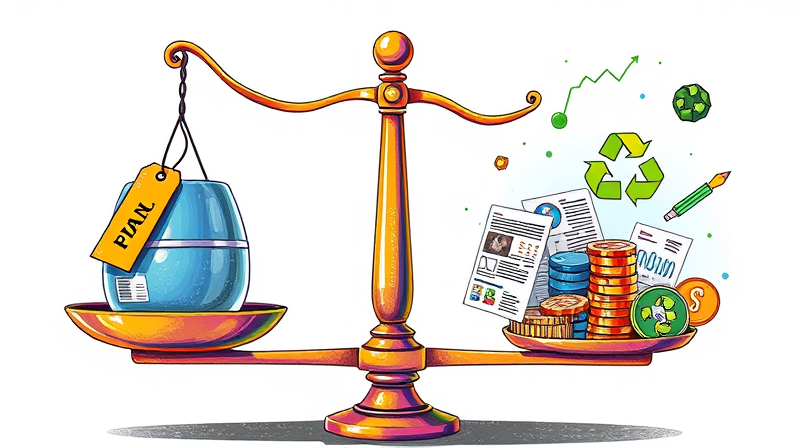
Discover why dedicating time and resources to yourself yields unmatched returns. This article explores both monetary and intangible benefits that accrue over a lifetime.
Modern investors often compare their portfolios to market benchmarks and find themselves disappointed. Over the two decades ending in 2018, the average equity fund investor in the U.S. earned a mere 3.88% annually, significantly trailing market indices. Meanwhile, the S&P 500 delivered an annualized return of 5.62%, and fixed income assets hovered near 0.22%. Emotional biases like panic selling and naive diversification further erode these gains. A personal investor who believed they could outperform the market often underperforms due to counterproductive emotional decision making.
Consider compounding: a 5% annual return grows $100 into roughly $163 over 10 years, $265 over 20 years, and $432 over 30 years. At face value these figures excite many, yet the true cost of volatility, fees, and behavioral mistakes can reduce effective gains by hundreds or thousands of dollars over decades.
Investing in your own skills and knowledge frequently yields returns that surpass these numbers. For example, nearly half of MBA graduates report measurable salary increases within a year of graduating. Another 15% transition into entirely new sectors, and 11% secure leadership roles they never anticipated. Such shifts can translate into lifelong earnings boosts that compound far more rapidly than a 5% stock portfolio.
When you master in-demand skills like coding, negotiation, or public speaking, you unlock opportunities that remain closed to the unprepared. Even basic financial literacy courses can save thousands by optimizing tax strategies, budgeting, and debt reduction. These are practical, high-impact competencies that pay for themselves many times over.
While numbers matter, the most enduring returns often defy quantification. Confidence gained through personal growth cannot be measured on a balance sheet but reshapes every interaction and decision. A heightened sense of self-efficacy makes you more likely to seize opportunities and negotiate better outcomes. Additionally, investing in mental and physical well-being builds long-lasting resilience against setbacks in both personal and professional spheres.
Relationship capital, developed through networking events, mentorships, and collaborative projects, stands as another crucial intangible. These connections become conduits for joint ventures, referrals, and unexpected partnerships. This social dimension of self-investment amplifies both financial and personal rewards, reinforcing a cycle of growth that money alone cannot purchase.
Self-investment manifests in diverse ways, each tailored to unique goals and circumstances. Common avenues include:
Prioritizing these areas according to your ambitions ensures a well-rounded approach that maximizes both immediate and future returns. By reinvesting early gains—such as a promotion or new client—into further learning or wellness, you establish a compounding effect that dramatically outpaces traditional investments.
One of the most compelling reasons to focus on self-investment is control. Market returns fluctuate due to geopolitical events, regulatory shifts, and global trends. In contrast, your personal development remains within your sphere of influence. You decide when to learn a new skill, who to network with, and how to allocate your time.
This self-directed approach minimizes external volatility and empowers you to respond dynamically to challenges. Instead of reacting to market downturns, you build adaptability and resilience—traits that ensure progress even in uncertain times.
Taking the first step can feel daunting. Start by defining clear, achievable goals. Do you want to boost your income, change careers, or simply feel healthier and more balanced? Once goals are set, develop a plan with measurable milestones:
Small, consistent efforts compound over time. Dedicating even one hour per week to skill development or relationship-building can yield exponential benefits in a few months. The key is persistence and a willingness to reinvest returns into additional growth.
Consider the story of a mid-career professional who spent weekends learning data analysis. Within eighteen months, they transitioned into a higher-paying analytics role, effectively doubling their salary growth trajectory. Or an entrepreneur who invested in public speaking training and saw client conversions soar by over 40% within six months. These narratives illustrate how targeted self-investment can lead to transformative outcomes that traditional portfolios rarely deliver.
While traditional investments have their place, the highest-yielding and most reliable returns come from investing in yourself. By developing skills, cultivating relationships, and nurturing your health and mindset, you build a foundation that compounds in value across every aspect of life. In a rapidly changing world, this is the one asset class you can command with certainty.
Embrace self-investment today. Define your goals, take purposeful action, and watch as every hour, dollar, and ounce of effort transforms into lifelong rewards far surpassing any stock market gains.
References













